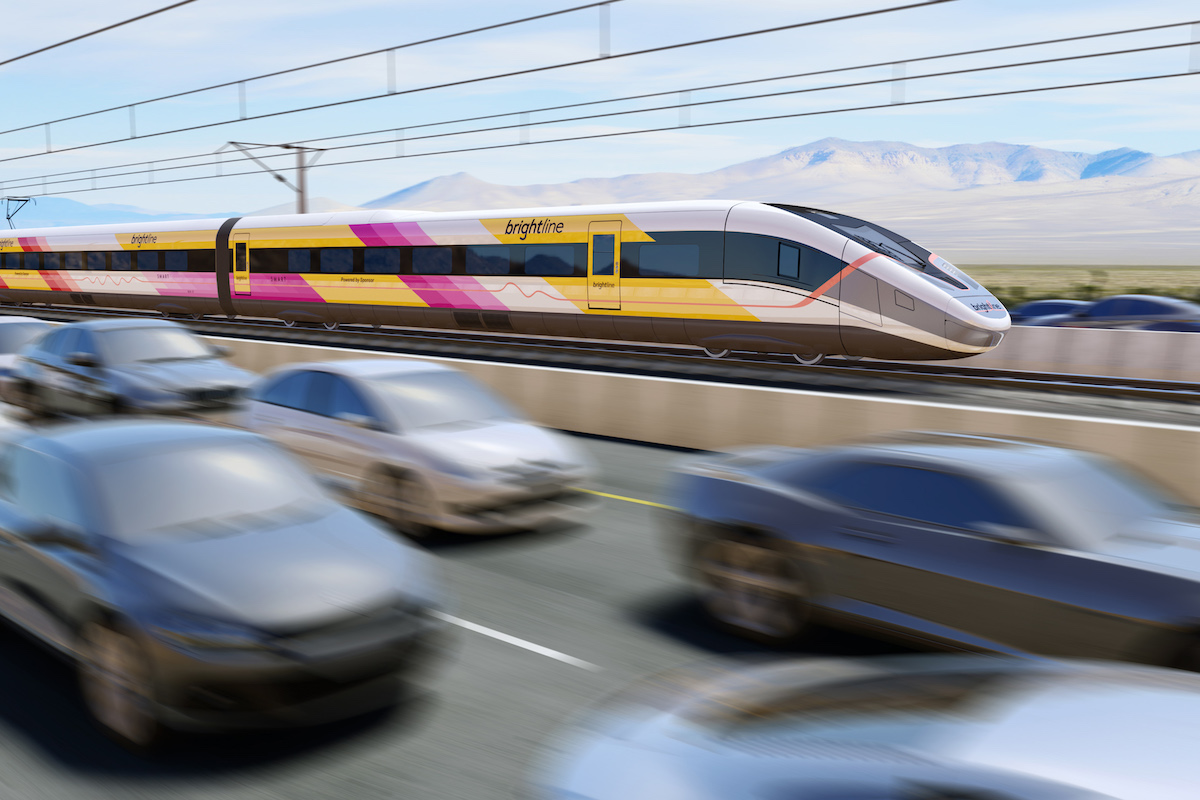Skift Take
President Biden is living up to his nickname Amtrak Joe with some big dollars for new passenger rail service across the country.
Las Vegas travelers are a $3 billion step closer to speeding through the Mojave Desert on a high-speed train linking Sin City with Southern California.
Brightline West’s Las Vegas-Southern California line is one of the 10 passenger rail projects across the U.S. that received $8.2 billion in federal grants Friday. Other projects include high-speed rail in California as well as new and upgraded corridors in North Carolina, Pennsylvania, and Virginia. The Federal Railroad Administration also handed out another $34.5 million in planning grants to study new or expanded rail service on 69 corridors.
“If you’ve ever seen the standard of passenger rail service in Japan or Germany … and come home and said ‘Why can’t we have these nice things?’ This is the beginning of the answer to that,” Transportation Secretary Pete Buttigieg said. “Help is on the way to make sure Americans have access to just as good rail service or better.”
Buttigieg described the grants unveiled Friday as the “largest investment in passenger rail since Amtrak was created” in 1971.
The grants are a signature piece of President Biden’s Bipartisan Infrastructure Law. It included $66 billion for passenger rail infrastructure, the largest single investment in intercity rail in U.S. history. While most of those funds will go to upgrades and improvements to the Northeast Corridor, the law included $11.5 billion in funds over five years for the development and construction of new passenger rail lines elsewhere around the country.
Americans are eager for those new trains. In its results for the year ending in September, Amtrak reported record ridership on train lines where it had expanded service. This included lines in Connecticut, North Carolina, Vermont, and Virginia. And Brightline, which opened a new line between Miami and Orlando in September, saw October ridership double from a year earlier when it only connected Miami and West Palm Beach.
Here are the rail projects and studies the Biden administration is funding.
Brightline West
Brightline West is the most shovel-ready of the rail projects that received funding Friday. Representatives of Fortress Investment, which owns the project formerly known as XpressWest as well as Brightline in Florida, have previously said that construction could begin by the end of the year upon receipt of federal funding.
Fortress aims to open Brightline West ahead of the 2028 Olympics in Los Angeles.
The $12 billion, 218-mile rail line would be the first true high-speed rail line in the U.S. The Department of Transportation defines high-speed rail as a line where trains run at 186 miles-per-hour or faster. Amtrak’s Acela only operates at speeds up to 150 miles-per-hour.
Brightline West connect the Las Vegas Strip with Rancho Cucamonga in Southern California in about 2 hours and 10 minutes. That is at least an hour faster than driving without traffic. The initial plan calls for up to 23 daily trains in each direction that could serve up to 11 million annual passengers.
President Biden, who earned the nickname Amtrak Joe for his daily train rides to work during his years in the Senate, will visit Las Vegas on Friday to highlight the Brightline West and other rail investments.
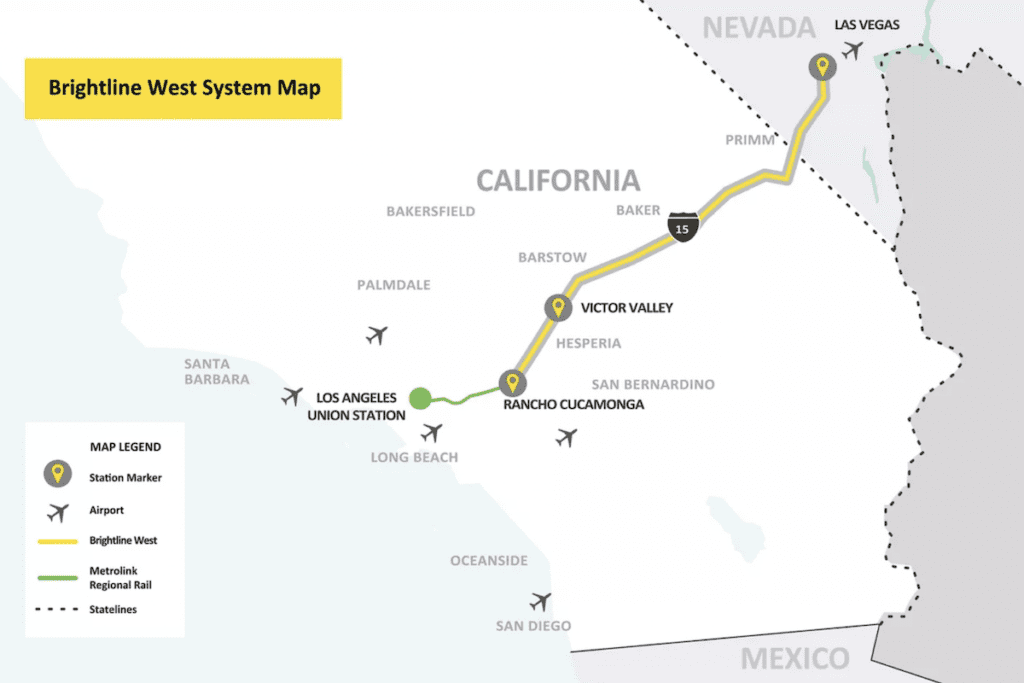
California High-Speed Rail
The California High-Speed Rail Authority will receive $3.1 billion for several elements of the line in the Central Valley. Those include construction of 13 miles of track in Bakersfield on the line’s initial Fresno-Bakersfield segment, a new station in Fresno, and other design elements.
The grant is, however, a drop in the bucket of the estimated $77-$113 billion cost to build the full line from Los Angeles to San Francisco, according to the authority’s 2022 business plan. The initial segment, which will run 171 miles from Bakersfield to Merced, is estimated to cost nearly $27 billion.
If all goes as planned — and it has not to date — travelers could be riding trains on the initial Central Valley segment by 2030.
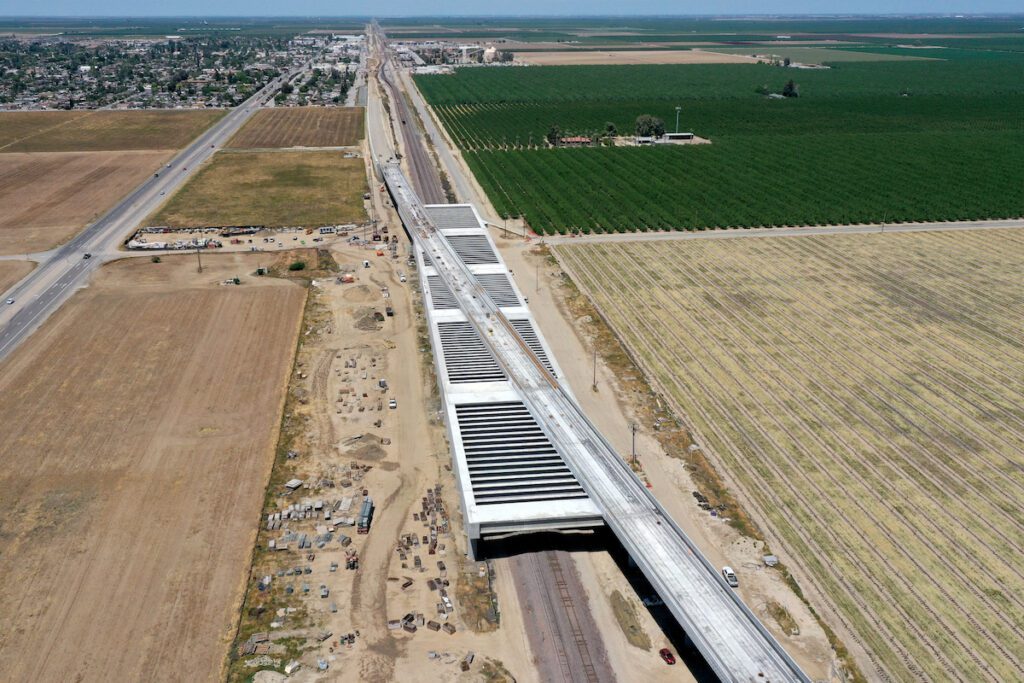
Raleigh-to-Richmond S-Line
North Carolina will get nearly $1.1 billion from the Biden administration for its portion of the 128-mile S-Line project that will connect Raleigh and Richmond. A joint project with Virginia, rebuilding the mostly abandoned rail corridor will cut around 90 minutes off the roughly 3-hour and 40-minute trip time between the two cities today; the drive currently takes less than 2.5 hours.
The S-Line “creates a new higher-speed, high-frequency, high-reliability, and high-safety route between these two systems so that you get multiple, fast trips throughout the day that are unimpeded with significant freight traffic,” said Jason Orthner, director of North Carolina’s rail division, at an Amtrak event earlier in December.
Virginia is ready to begin 30% design work on its portion of the project, Virginia Passenger Rail Authority head DJ Stadtler said at the same event.
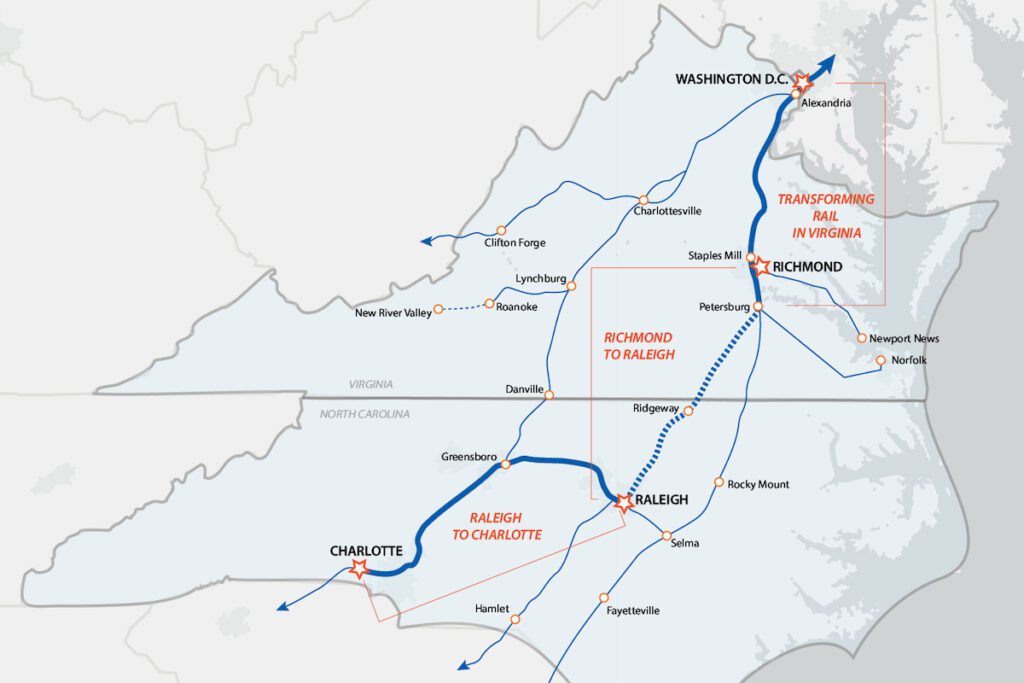
Potomac River Long Bridge Expansion
Speaking of Virginia, the commonwealth received $729 million for its expansion of the Long Bridge over the Potomac River to Washington, D.C. The $2.6 billion project includes a new rail bridge across the river, as well as new tracks and stations in both Northern Virginia and the District to accommodate more frequent passenger trains.
“There’s nothing that can really happen in terms of growing our rail usage, both for passenger and freight, if you don’t deal with Long Bridge,” Virginia Senator Tim Kaine (D) said Thursday.
Virginia plans to add five more Amtrak trains across the Potomac for 19 daily by 2030, as well as 10 new commuter rail trains.
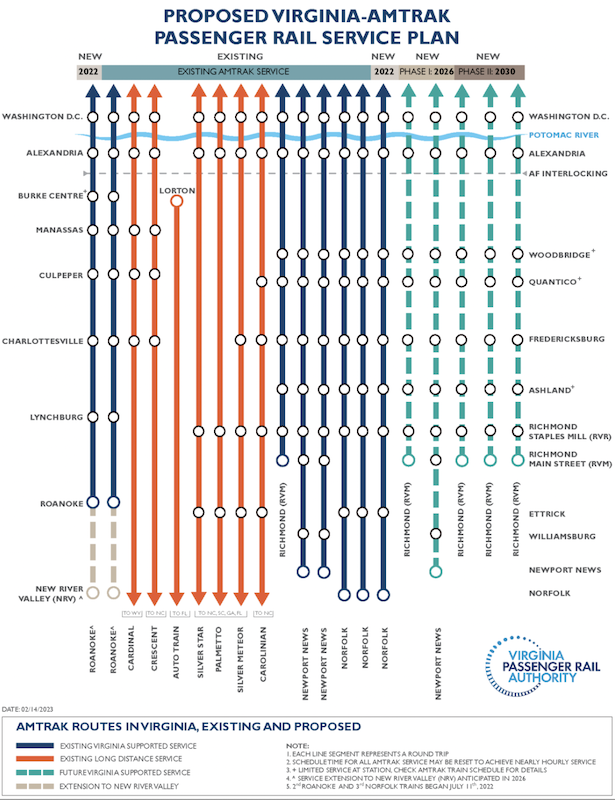
Chicago and Others Got Small Grants
A number of smaller projects also won funds. Pennsylvania received nearly $144 million for improvements to the rail line connecting Harrisburg and Pittsburgh. The project aims to improve reliability, and allow the state to add a second daily Amtrak train connecting Philadelphia and Pittsburgh.
Illinois received nearly $94 million in two separate grants for elements of Amtrak’s modernization plan for Chicago Union Station. The more than $400 million project will renovate and expand the facility. Chicago Union Station is the third busiest Amtrak station in the U.S. after New York Penn and Washington Union stations.
Maine received nearly $28 million for track improvements to the Amtrak Downeaster line that connects Boston and Brunswick, Maine. Montana $15 million for improvements to tracks in and around Malta on Amtrak’s Empire Service train. And Alaska $8.2 million to replace a bridge on the rail line connecting Anchorage and Fairbanks.
Colorado, Ohio, Texas Among States Receiving Planning Funds
Colorado’s long talked about rail line connecting four of its largest cities — Denver plus Colorado Springs, Fort Collins, and Pueblo — along the front range of the Rocky Mountains was one of dozens of potential projects that got a $500,000 leg up.
The grants, part of the Federal Railroad Administration’s Corridor Identification and Development Program, can be used by states and other jurisdictions to study and develop plans for passenger rail that they could later seek federal funding for.
“What we’re doing is creating a pipeline for promising intercity passenger rail projects to help them get ready for future investment,” Buttigieg said.
Other recipients include Amtrak’s proposed high-speed rail line between Dallas and Houston that is also known as the Texas Central project; an Amtrak line connecting Cincinnati and Cleveland in Ohio via Columbus and Dayton; the Northern Lights Express between Minneapolis and Duluth, Minn.; and upgrades to the Cascades corridor connecting Portland, Ore., Seattle, and Vancouver, B.C.
Asked about the prospects for passenger rail investments after the Bipartisan Infrastructure Law funds run dry, Buttigieg was optimistic.
“If we can deliver, and if our project sponsors can deliver with this funding, I think there will be more and more of an appetite in America to make the investments that are needed for some of those other corridors to come online,” he said.
At the Amtrak meeting earlier in December, Vice President of Network Development Nicole Bucich gave a realistic view of the timeline for many of these rail expansion projects. Expanding service on existing lines takes three-and-a-half to five years; extending trains on an existing line five to eight years; and building an entirely new corridor seven to 12 years.
Americans, meanwhile, are ready when trains begin to roll. “If you put the trains in place, people will come,” Stadtler said.
The Daily Newsletter
Our daily coverage of the global travel industry. Written by editors and analysts from across Skift’s brands.
Have a confidential tip for Skift? Get in touch
Tags: amtrak, Biden Administration, Brightline, ground transportation, high-speed rail, pete buttigieg, trains
Photo credit: A rendering of a Brightline West train speeding by traffic. (Brightline West) Brightline West
